UK looks to Sweden for a solution to nuclear waste
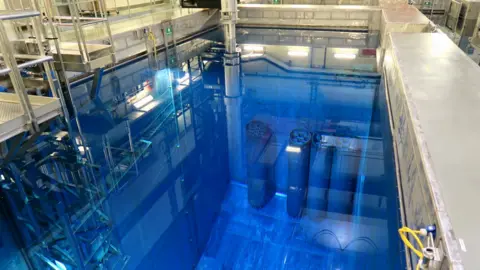 BBC
BBCIn deep, astonishingly clear, blue-lit ponds some 40m (130ft) beneath the Swedish countryside, lies decades worth of high-level nuclear waste.
It is an oddly beautiful and rather disturbing sight. Row upon row of long metal containers, filled with used nuclear fuel from the country's reactors, lie below the surface near Oskarshamn, on Sweden's Baltic coast.
It is both highly lethal and entirely safe.
Lethal, because this material is intensely radioactive; safe, because it sits beneath 8m of water, a very effective barrier against radiation.
Waste can be kept like this for decades. In fact, it needs to be.
Intense radioactivity generates a great deal of heat, and this kind of material has to be cooled for long periods before it can be removed for storage.
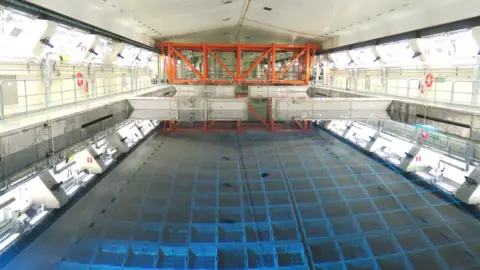
The question of what to do with it afterwards, though, is one that many governments, including that of the UK, have been grappling with for years.
The problem is not quantity.
Even after some 60 years of commercial and military programmes the UK's stockpile of the most dangerous high-level waste amounts to a few thousand tonnes, although there are also several hundred thousand tonnes of intermediate-level waste which will have to be dealt with as well.
The real issue is time.
"Used fuel assemblies are intensely radioactive, and that radioactivity takes a long time to decay," explains Prof Neil Hyatt, chief scientific adviser to the UK's Nuclear Waste Services.
"After about 1,000 years, about 10% of the original radioactivity is left, and that will slowly decay away over about 100,000 years or so."
This creates unique difficulties.
"We can't rely on institutional control for timescales of much longer than a few centuries," says Prof Hyatt.
"The Roman Empire lasted about 500 years. The last ice age ended about 10,000 years ago.
"So the surface of the Earth and human civilisations change much more quickly than the rate at which the radioactivity in this spent nuclear fuel can decay."
Sweden has already reached its own conclusions. It plans to bury its waste in rock deep underground and leave it there for good.
This is a process known as geological disposal, and the country's scientists have spent decades studying different ways in which it could be carried out.
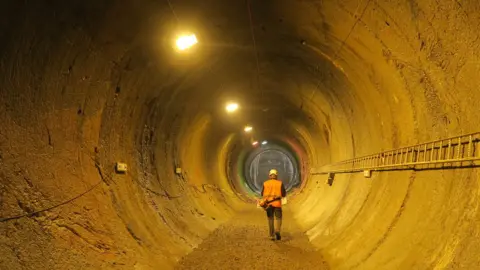
Much of the research has been carried out in the Aspo Hard Rock Laboratory, a facility built near Oskarshamn in the south of the country.
Hundreds of metres beneath the surface, a network of huge man-made caverns has been drilled into the rock.
It is being used for experiments, looking at how wastes could be packaged and entombed, and at how the materials being used might degrade over time.
The bedrock here is fissured and running with salt water - ancient brine that has migrated from the Baltic Sea far above over thousands of years.
Such a damp environment would not be suitable for a real disposal facility. But according to Ylva Stenqvist, a project director at the country's nuclear operator SKB, it is perfect for testing.
"This site was picked because it is quite wet," she explains.
"Because if we try our experiments in an area which is really dry, we have to wait for ages for any kind of results.
"So we consciously chose this place to accelerate some of the experiments, to really stress our materials and our methods and see how they stand up in this quite aggressive environment."
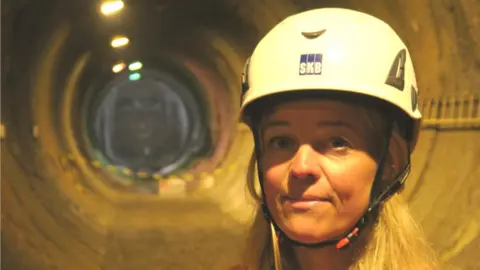
Earlier this year the Swedish government approved plans for a real geological disposal facility (GDF), to be built at Forsmark, some 150km north of Stockholm.
The project is expected to cost about 19bn Swedish kroner (£1.5bn; $1.8bn), and create 1,500 jobs, though construction will take decades. Work on a similar scheme, across the Baltic Sea in Finland, began in 2015.
These developments are being watched carefully from the UK, which also intends to build a GDF, though repeated attempts to find a suitable location have been stymied by political intransigence, as well as by intense opposition from local protesters and environmentalists.
Current efforts to find a site and a population willing to host it now follow a "consent based" approach, under which the government body Nuclear Waste Services sets up partnerships with local communities in order to engage them in the process.
As an incentive, those communities are offered £1m in investment for local initiatives when they sign up, with that figure rising to £2.5m if deep drilling operations take place.
Since this process began in 2018, four such partnerships have been set up.
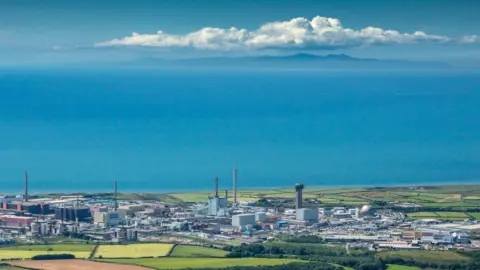 Getty Images
Getty ImagesThree are in Cumbria. They include the section of coastline that is already home to the Sellafield nuclear plant and many of its workers. The fourth, and most recent, was established in Theddlethorpe, Lincolnshire.
Scotland is not part of this process, and the Scottish government currently does not support deep geological disposal.
Even in the areas where partnerships have been set up, strong opposition remains.
"We are vehemently opposed to the geological disposal of hot, heat-generating nuclear waste," says Marianne Birkby of Cumbria protest group Radiation Free Lakeland.
"The waste should remain where it can be monitored, where it can be repacked, and where it can be retrieved if something goes horribly wrong," she insists. "Below ground there would be absolutely no chance of containment if a leak occurred."


It is unlikely that a site for a UK GDF will be settled upon for at least another 15 years. But some experts question whether it should ever be built at all.
Among them is Dr Paul Dorfman, associate fellow of the science policy research unit at the University of Sussex and chair of the Nuclear Consulting Group, an anti-nuclear energy organisation.
"Geological disposal is a concept, not a reality," he explains. "There is significant scientific uncertainty about whether the materials which would be used can survive the depredations of time."
He believes the government's enthusiasm for new nuclear power stations is the reason why it is pushing to build a GDF.
"If you can't get rid of the waste, you can't produce more, which means that nuclear's USP - that it's climate-friendly and so on - is completely dependent on the notion that you can get rid of this waste," he says.
"Geological disposal is in fact, unfortunately, a nuclear fig leaf."
Clarification 20 September: This article was edited to reflect that the Nuclear Consulting Group is an anti-nuclear energy organisation.
